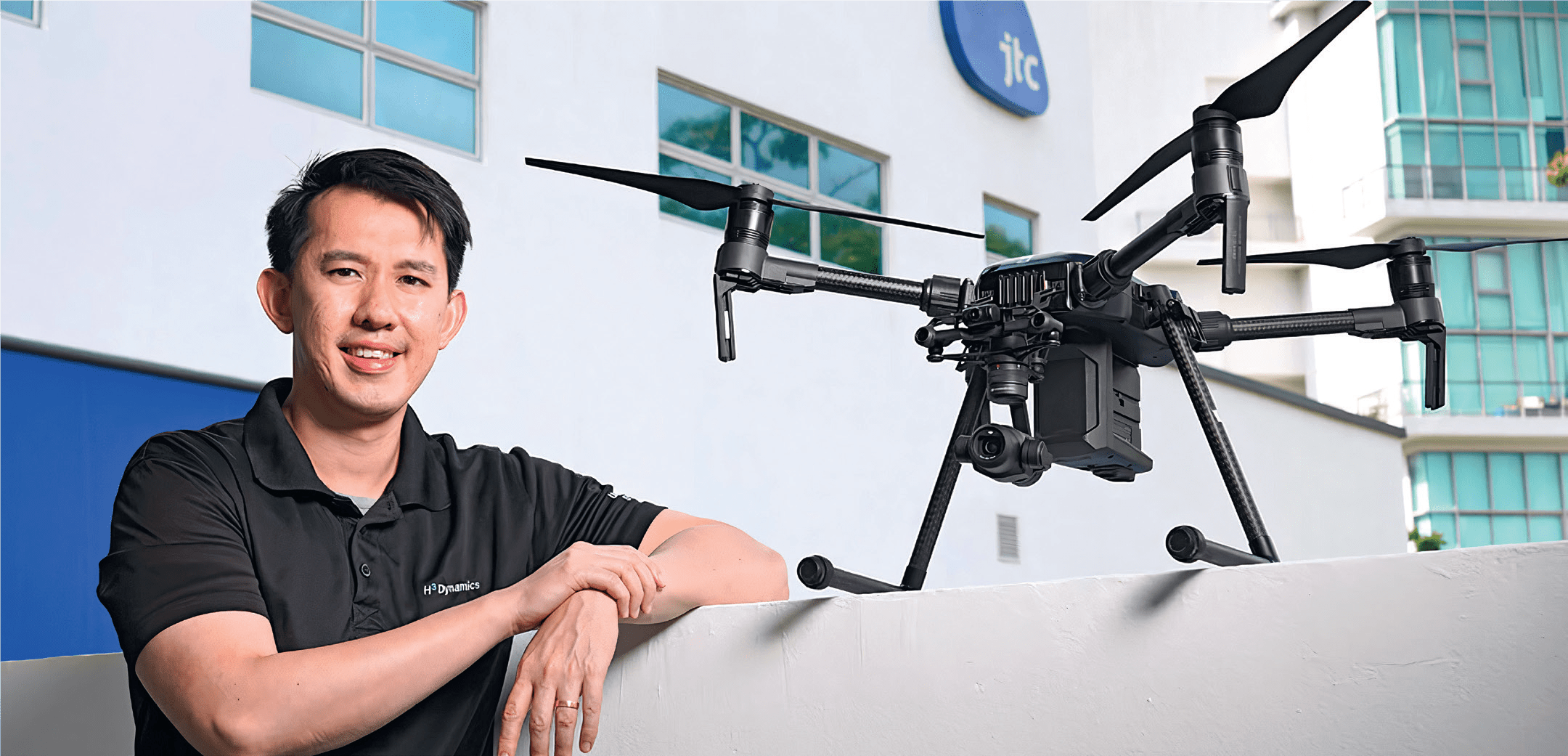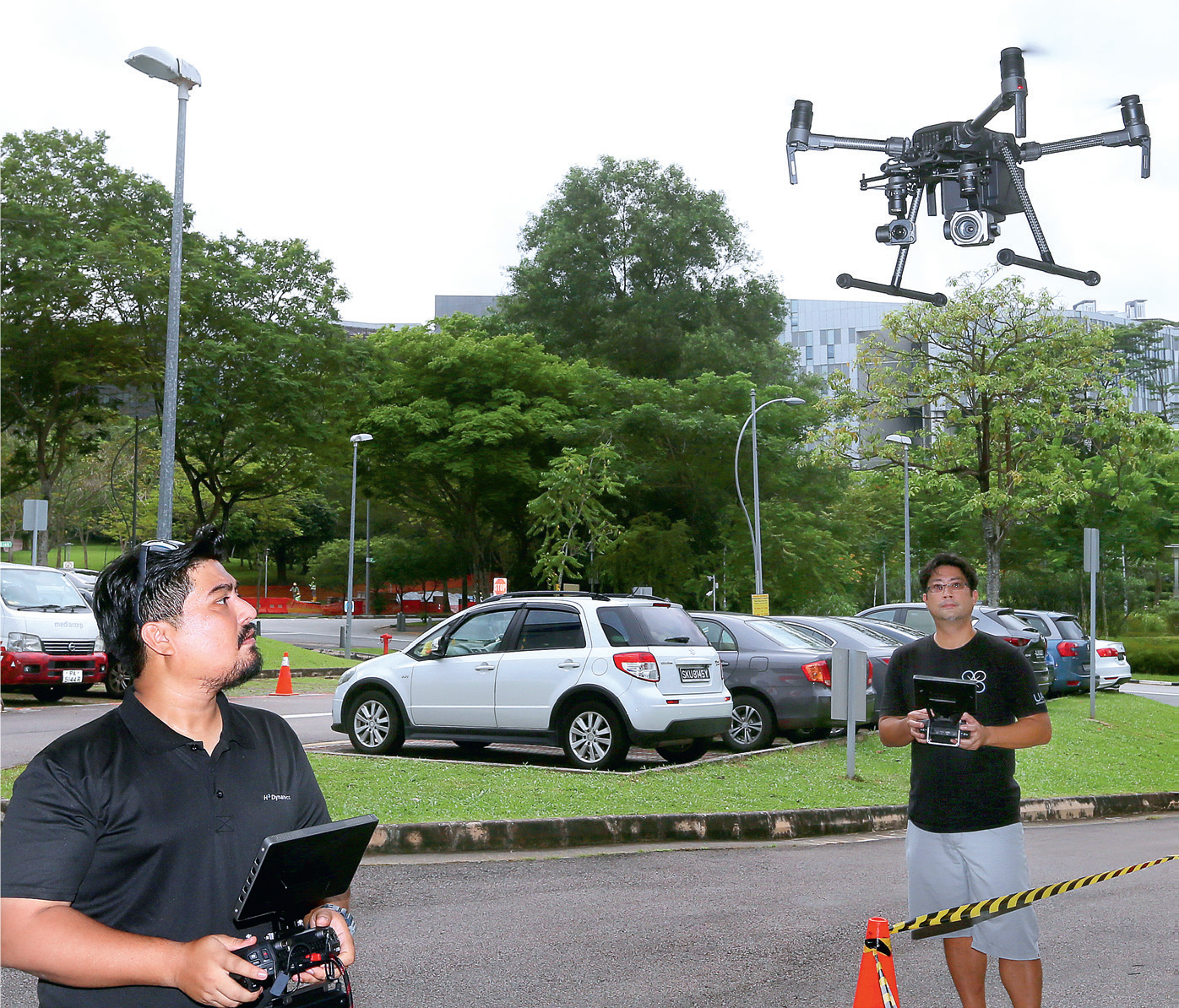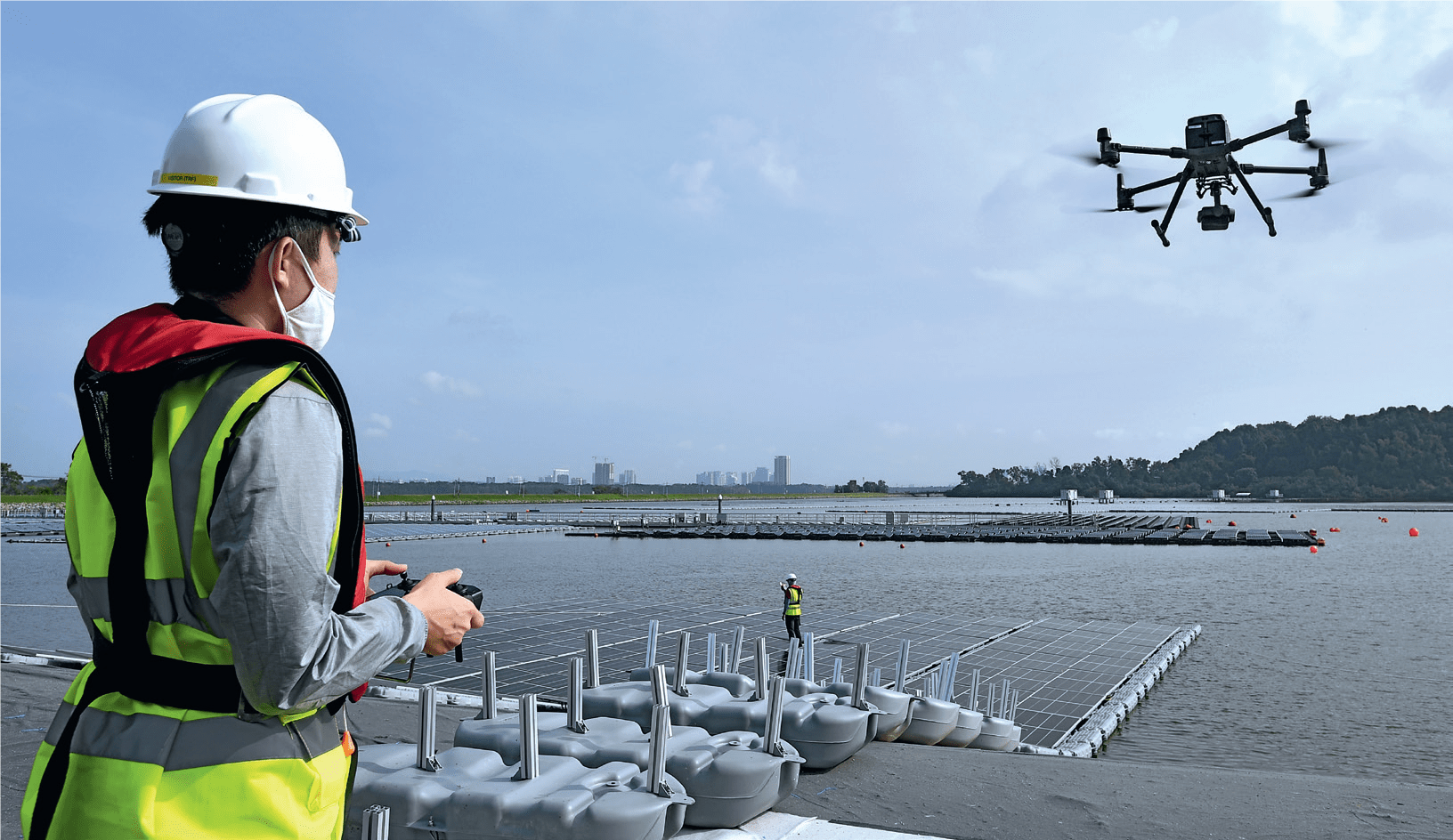Stories > Airborne Assistance
Airborne Assistance
Singapore company H3 Dynamics is out to make the process of building inspections and facilities management smarter and safer.
BY ALYWIN CHEW
PHOTOS THE STR AITS TIMES/SPH

Singaporean Shaun Koo came up with the idea to use drones for building inspection in 2016, when the usage of drones was still not widespread and they were mostly used as recreational gadgets.
uilding inspections usually come with relatively high levels of risk, as workers have to be on gondola lifts or be suspended in the air through the use of ropes to perform checks and take images of the façade.
Despite safety precautions, such as wearing harnesses, accidents do occur. According to the Workplace Safety and Health Council, a statutory body under Singapore’s Ministry of Manpower, most work-related deaths and injuries are caused by falls from height.
The process can also be rather laborious – inspections often take weeks, depending on the complexity of the tasks involved.
Singapore firm H3 Dynamics is among several companies that are leading the charge to improve how inspections are done in this sector.
Its solution? H3Zoom.Ai, an artificial intelligence-powered platform.
According to H3Zoom.Ai co-founder and chief technology officer Shaun Koo, drones are first used to capture images or videos of required building segments. The footage is then relayed to the company’s proprietary AI-powered platform that acts as “a health hub for buildings”, allowing users to access information about building materials, schedule repairs, and learn about recurring problems and how often they occur.
“THERE WAS A NEED TO EDUCATE THE MARKET ABOUT THE BENEFITS OF SUCH (AI-BASED DRONE) TECHNOLOGY. THE SMALL- AND MEDIUM-SIZED ENTERPRISES WERE DEFINITELY SCEPTICAL ABOUT THIS NEW TECH,” SAYS SHAUN KOO.
Besides reducing the inspection duration by up to 80 per cent, H3Zoom.Ai’s offering also eliminates the risks associated with working at heights, and significantly reduces manpower requirements and costs. Koo estimates that H3Zoom.Ai can help companies save more than 50 per cent in overall inspection costs.
Founded in 2015, H3 Dynamics started its foray into the building inspection and facilities management sector in 2016 when Koo started spearheading efforts to bolster the company’s digital offerings.
EXPLORING NEW TERRITORIES
The idea behind H3Zoom.Ai, says Koo, was simply a marriage of H3 Dynamics’ key offering – aerial robots powered by liquid hydrogen fuel cell propulsion systems – with his previous work experiences in software development and building environments.
“We initially received inquires from companies in Asia looking to use drones and AI to check on crop health and generate data for the agriculture industry, but later, I found that the economics just didn’t stack up,” says Koo.

Due to a shortage of manpower to do manual inspection of buildings and built facilities, the drone technology has helped the facilities management companies in a big way.
“The labour cost in these countries is so low that the return on investment with our solutions just didn’t make much sense for farmers to adopt the technology. Also, some farms are just too large for drones, which were still in the nascent stages of development, to be effective.”
Following extensive market research, Koo realised that the drones could be best deployed to address the pain points of the building inspection sector. In 2019, H3Zoom.Ai went live. Its first clients were a Singapore government agency and a government-linked company.
Trying to get clients from the private sector, however, proved to be a challenge.
“There was a need to educate the market about the benefits of such technology. The small- and medium-sized enterprises were definitely sceptical about this new tech. Some thought this was going to be more expensive than traditional inspection, while others were concerned that technology was going to replace them,” says Koo.
“We had to really engage with the industry players and conduct webinars to share with them how this is something to embrace and not fear.”
While Koo concedes that technology could eventually replace humans in this field, such a scenario would not happen in the foreseeable future. At present, such technology is simply a means to augment the inspection process and help inspectors perform their jobs more efficiently, he says.
While the Covid-19 pandemic has devastated multiple industries, Koo is thankful that the crisis has instead provided a boost to H3Zoom.Ai’s business as border restrictions have stemmed the flow of foreign workers who usually perform such inspections. The company’s clientele has expanded tenfold since 2019.
HUMAN ASPECT OF TECHNOLOGY
Besides building inspection and facilities management, inquiries about leveraging the company’s drones and digital offerings for humanitarian efforts such as post-disaster analysis have also been coming in.

AI-powered drones are being touted as the next big thing in infrastructure inspection, including industries such as solar panel installations, as well as maritime and utilities infrastructure.
“From a technology perspective, I think the Japanese were rather amazed that a small, Singapore-based firm came up with a cutting-edge solution that isn’t even available in Japan. I thought this was quite humbling. Japan is, after all, known for its tech innovations.”
Shaun Koo, chief technology officer, H3Zoom.Ai
While H3Zoom.Ai has yet to be deployed for such purposes, Koo points out that the platform does have the potential to shine in such cases. For the time being, however, the company is focused on expanding its services to the maritime, infrastructure and utilities sectors, where preventive asset maintenance is critical.
“As regulations ease up, I do expect to see a proliferation of drone usage in industries such as maritime, building infrastructure and utilities. Stakeholders in these industries are faced with similar pain points when it comes to asset maintenance, and a lack of regular and preventive maintenance measures have led to numerous incidents over time,” he explains.
The use of drones could become even more ubiquitous in the coming decade, says Koo, who believes these unmanned devices may even be used for short-range passenger transportation.
Besides Singapore companies, which make up about 80 per cent of H3Zoom.Ai’s clientele, Koo also works with parties in countries such as Thailand, the Philippines, Australia, Brazil, France and Japan.
His experience with the Japanese, he notes, has been an eye-opening one.
“I have discovered that the Japanese have very high standards and are incredibly meticulous when it comes to facilities management. In Singapore, some old buildings might not have certain documentation or archival data. But this is almost never the case in Japan. They document everything. It is impressive,” he says.
The act of doing business with the Japanese, however, is a different matter.
“The Japanese are not as direct as Singaporeans. They won’t explicitly tell you that they disagree with something. They present it in a nuanced manner. At the end of the day, I have learnt that in Japan, the client is king. You must always give in to a Japanese client’s demands even if you think you have a better solution!” he quips.
When asked about whether his clients have managed to learn anything about his homeland, Koo says that his Japanese counterparts have a quiet admiration for Singapore’s innovation capabilities.
“From a technology perspective, I think the Japanese were rather amazed that a small, Singapore-based firm came up with a cutting-edge solution that isn’t even available in Japan,” he says. “I thought this was quite humbling. Japan is, after all, known for its tech innovations.”
